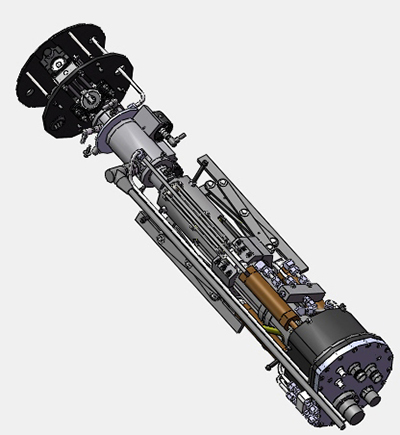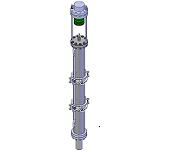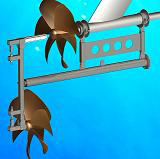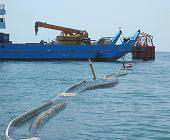
Diving Technology and Tool Design
Equipment designed by divers for divers
 There are times when conventional rigging equipment and off-the-shelf underwater diver tools are insufficient or inadequate to solve complex underwater challenges. Phoenix engineers routinely design specialty tools and equipment to enable divers to perform underwater tasks more efficiently and safely.
There are times when conventional rigging equipment and off-the-shelf underwater diver tools are insufficient or inadequate to solve complex underwater challenges. Phoenix engineers routinely design specialty tools and equipment to enable divers to perform underwater tasks more efficiently and safely.
In addition to their engineering credentials (marine/ocean, electrical, or mechanical), many of our engineers are professionally trained and certified commercial divers and routinely work alongside our full-time divers.
Phoenix-designed diver tooling and equipment are created from a true ‘diver’ perspective, applying our engineers’ hands-on diving experience. All equipment is designed to meet applicable standards, including:
- NAVFAC P-307
- U.S. Navy Underwater Ship Husbandry Manual
- Naval Ships’ Technical Manual Chapters
- Deep Diving General Overhaul Specification (DDGOS)
- American Bureau of Shipping (ABS), Lloyd’s, and other commercial standards
Sea Chest Inspection System
Developed for the U.S. Navy to inspect the condition of sea chest waster sleeves, the system is inserted into the sea chest by a diver, holds itself in place, and automatically completes an ultrasonic and video inspection of the entire waster sleeve.
3-D Damage Assessment Tool (3-DAT)
This tool is a laser scanning system, developed by Phoenix Engineers, that utilizes a portable Coordinate Measuring Machine (CMM) to develop point clouds of underwater ship damage.
Confined Space Rigging Equipment
 The difficulty of manipulating heavy equipment within ballast tanks and other underwater confined spaces often requires special-purpose rigging equipment not found on the shelf. By designing and building special clamps and rigging fixtures, in-water time and job safety can be reduced, benefiting both the customer and the diver.
The difficulty of manipulating heavy equipment within ballast tanks and other underwater confined spaces often requires special-purpose rigging equipment not found on the shelf. By designing and building special clamps and rigging fixtures, in-water time and job safety can be reduced, benefiting both the customer and the diver.
Propeller Replacement Tool
 Phoenix engineers designed this tool to replace a propeller on a ship that cannot be dry-docked or has insufficient clearance above the propeller to install overhead rigging. The device uses the replacement propeller as a counterweight, thus eliminating the need for motors or winches to move the propeller in line with the shaft.
Phoenix engineers designed this tool to replace a propeller on a ship that cannot be dry-docked or has insufficient clearance above the propeller to install overhead rigging. The device uses the replacement propeller as a counterweight, thus eliminating the need for motors or winches to move the propeller in line with the shaft.
Offshore Mooring Tools
 Phoenix has experience in engineering and executing in-water repairs to Single-Point-Mooring (SPM) systems, including buoys, buoy mooring chains, floating hoses, and subsea hoses. In addition to the mooring system, Phoenix has completed SPM subsea hose stabilization and complete hydrostatic testing of SPM product systems.
Phoenix has experience in engineering and executing in-water repairs to Single-Point-Mooring (SPM) systems, including buoys, buoy mooring chains, floating hoses, and subsea hoses. In addition to the mooring system, Phoenix has completed SPM subsea hose stabilization and complete hydrostatic testing of SPM product systems.
